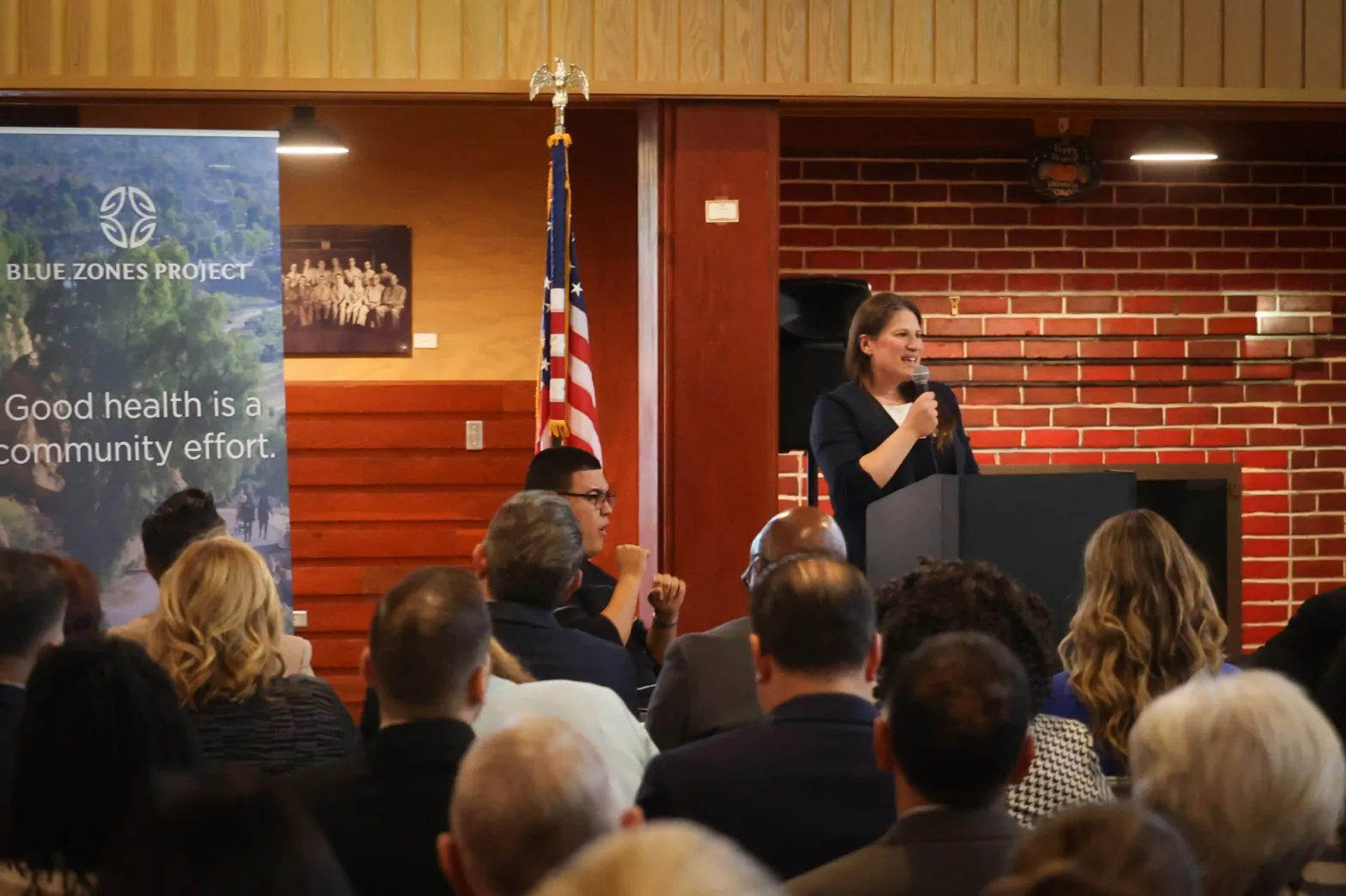In 2005, National Geographic printed an article titled “The Secrets of a Long Life” by Dan Buettner. The article was based on a study of five locations around the globe where residents had substantially longer life expectancies than other parts of the world. The original “Blue Zones” included regions in Italy, Greece, Japan, Costa Rica and our very own Loma Linda.
From this original research, Buettner identified a set of specific lifestyle habits common to the five communities. Eating well, staying active, strong social connections and knowing our purpose for getting up each day were central themes. Essentially, the research demonstrates that what we put into our bodies, how we move our bodies and who we are surrounded by can have lasting impacts on our quality and quantity of life.
A multitude of research studies have now confirmed that our environment and health choices, often referred to as “social drivers of health,” are clearly linked to long-term health outcomes.
An article published by the National Library of Medicine in 2023 confirms the effects of healthy lifestyles on chronic diseases. Specifically, the research states that a healthy diet, moderate and regular exercise and sufficient amounts of high-quality sleep can delay or prevent chronic diseases. The study notes that lifestyle is the most controllable and influential factor affecting general health and resilience to disease.
So, if we know that making better choices plays a significant role in our physical and mental health, why do we have such a high prevalence of obesity, diabetes, high blood pressure, depression and other chronic health conditions?
In short, the places where we spend our time greatly influence our health decisions. When we are surrounded by fast food restaurants, high-calorie and high-sugar options, and can have any desired food, package or service delivered right to our front door with the push of a button, it can make it much more difficult to make healthy choices.
Based on this, the Blue Zones organization has developed a process for helping communities reshape their environments for greater longevity and vitality. Their goal is to improve policies and places to help make the healthy choice the easy choice.
In a unique partnership, Inland Empire Health Plan, IEHP Foundation, Kaiser Permanente, Molina Health, Eisenhower Health and Riverside University Health System have come together with Blue Zones to launch a nearly six-year initiative to bring these principles to the Inland Empire. The cities of Riverside, Banning, Palm Springs, Coachella and the unincorporated area of Mead Valley, all within Riverside County, will be the focus of this community-driven initiative to bring lasting change intended to improve health outcomes for residents.
“I’m incredibly excited about the launch of multiple Blue Zones Projects and a Blue Zones Activate in Riverside County. This transformative movement will spark lasting change in the entire region, fostering a culture of well-being and vitality,” said Ben Leedle, CEO of Blue Zones and co-founder of Blue Zones Project. “The potential for collective impact is immense, and I’m eager to see the ripple effects of improved health, happiness, and longevity throughout Riverside County for many generations.”
The Blue Zones organization will work with schools, employers, restaurants, grocery stores and government leaders to make improvements that increase healthier food options, encourage walking and exercise, and enhance opportunities to be connected with community.
Blue Zones Executive Director for the city of Riverside, Erin Edwards, is a former City Council member hired as part of a team of Inland Empire residents who will lead the project. By working closely with community partners, nonprofit organizations and local business leaders, Edwards is beginning to shape a “blueprint” that will guide efforts to improve the local health environment over the next five years. As noted by the city’s mayor, applying Blue Zones global research in a way that is aligned with local perspectives and cultures is critical.
“Prioritizing health and wellness can often be difficult with our busy lives,” Riverside’s Mayor Patricia Lock Dawson said. “Blue Zones lets residents decide how to build a healthier and happier community that works for them.”
In Buettner’s book, “The Blue Zones Challenge,” a set of recommendations is given to help individuals set up their own at-home Blue Zones environment. By posting lists of healthy food ideas, hiding sweet treats, leaving your walking shoes where you can see them, and writing a personal purpose statement, anyone can set themselves and their family up for success.
So, where will you start?
Blue Zones has a variety of resources available online for personal use or, if you are interested in being part of one of the local Riverside region Blue Zones projects, you can learn more and sign up to be part of the effort at BlueZonesProjectRiverside.com.
